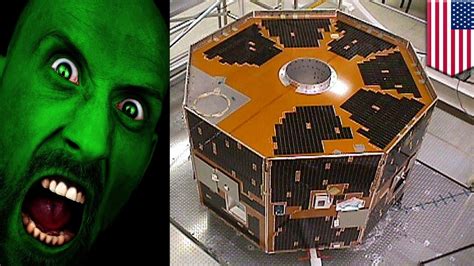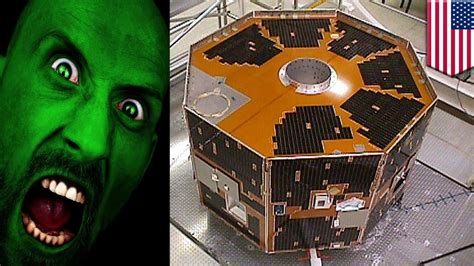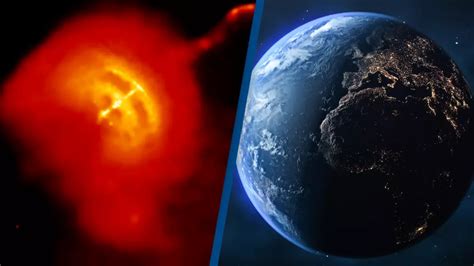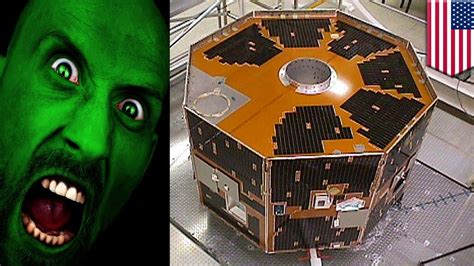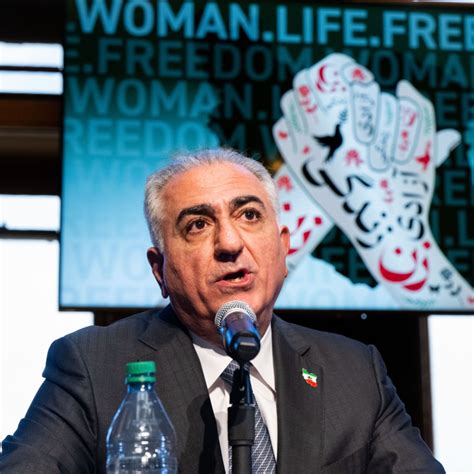
Reza Pahlavi, the son of the late Shah of Iran, asserts that a democratic and secular future for Iran is within reach, emphasizing the growing unity among Iranians from diverse backgrounds against the current regime. He argues that the widespread discontent with the Islamic Republic presents a pivotal opportunity for fundamental change.
Reza Pahlavi, the exiled son of the last Shah of Iran, is increasingly vocal about his vision for a future Iran, one that is democratic, secular, and free from the constraints of the current Islamic Republic. In recent interviews and public appearances, Pahlavi has articulated a message of unity and hope, asserting that the conditions are ripe for a significant political transition. He believes that the Iranian people, united by their shared grievances, are poised to usher in an era of freedom and self-determination.
Pahlavi’s perspective is rooted in a deep understanding of Iran’s history and a keen awareness of its present challenges. He points to the widespread dissatisfaction with the current regime, citing economic hardship, political repression, and social restrictions as key drivers of popular discontent. “The level of unity that I’m witnessing is unprecedented between Iranians from all walks of life, regardless of ethnicity, language, religion,” Pahlavi stated, highlighting the unifying power of shared adversity.
His vision for a future Iran is one where the rights and freedoms of all citizens are protected, where the rule of law prevails, and where the government is accountable to the people. Pahlavi emphasizes that this transformation must be driven by the Iranian people themselves, with the international community playing a supportive role. He advocates for a peaceful transition, one that avoids further bloodshed and instability.
The political landscape within Iran is complex and multifaceted, with a variety of factions and ideologies vying for influence. The current regime, led by Supreme Leader Ali Khamenei, has maintained a firm grip on power for decades, suppressing dissent and controlling the media. However, there are also signs of growing internal divisions, with some factions advocating for reform and greater openness.
Pahlavi’s vision resonates with many Iranians who yearn for a more democratic and prosperous future. His message of unity and hope has gained traction among various segments of the population, including students, activists, and ordinary citizens. However, he also faces significant challenges, including the regime’s efforts to discredit him and the lack of a clear and unified opposition movement.
The role of the international community in Iran’s future remains a subject of debate. Some argue that external pressure, such as sanctions and diplomatic isolation, can help to weaken the regime and create space for change. Others caution against intervention, arguing that it could backfire and lead to further instability. Pahlavi himself advocates for targeted sanctions against regime officials who are responsible for human rights abuses and corruption, while also calling for greater support for Iranian civil society.
The path to a democratic and secular Iran is fraught with challenges, but Pahlavi remains optimistic. He believes that the Iranian people are resilient and determined, and that they will ultimately succeed in their quest for freedom and self-determination. His vision serves as a beacon of hope for many who dream of a better future for Iran.
Deep Dive into the Current Situation in Iran
Iran is currently governed by an Islamic Republic, established after the 1979 revolution that ousted the Shah, Mohammad Reza Pahlavi, Reza Pahlavi’s father. The Supreme Leader, Ali Khamenei, holds ultimate authority, overseeing the political, religious, and military institutions of the country. The President, currently Ebrahim Raisi, is the head of the executive branch but is subordinate to the Supreme Leader.
The country has been grappling with a multitude of challenges, including economic hardship, social unrest, and international isolation. The economy has been severely impacted by sanctions imposed by the United States and other countries in response to Iran’s nuclear program and its support for militant groups in the region. These sanctions have led to high inflation, unemployment, and a decline in living standards.
Socially, Iran has witnessed growing discontent among its population, particularly among young people, who are increasingly frustrated with the restrictions on personal freedoms and the lack of economic opportunities. Protests have erupted periodically in recent years, often sparked by specific grievances such as rising fuel prices or the death of Mahsa Amini, a young woman who died in police custody after being arrested for allegedly violating the country’s dress code.
The political system in Iran is characterized by a complex interplay of factions and ideologies. While the Supreme Leader and his hardline allies maintain a firm grip on power, there are also elements within the regime who advocate for reform and greater openness. However, these voices are often marginalized and suppressed.
Iran’s foreign policy is driven by a combination of factors, including its desire to project power in the region, its ideological commitment to supporting Shia Muslim communities, and its opposition to the United States and its allies. Iran has been involved in conflicts in Syria, Iraq, and Yemen, and it has been accused of supporting terrorist groups such as Hezbollah and Hamas.
Reza Pahlavi’s Role and Vision
Reza Pahlavi has been an outspoken critic of the Islamic Republic for decades. He advocates for a peaceful transition to a democratic and secular government in Iran. He believes that the Iranian people are capable of governing themselves and that they deserve the opportunity to choose their own leaders and determine their own future.
Pahlavi’s vision for a future Iran is based on the principles of human rights, democracy, and the rule of law. He envisions a country where all citizens are equal before the law, where freedom of expression and assembly are protected, and where the government is accountable to the people. He also emphasizes the importance of economic development and social justice.
Pahlavi’s message has resonated with many Iranians who are disillusioned with the current regime. He has gained a significant following on social media, and he has been invited to speak at various international forums. However, he also faces challenges, including the regime’s efforts to discredit him and the lack of a unified opposition movement.
International Perspectives and Involvement
The international community is divided on how to deal with Iran. Some countries, such as the United States, have adopted a policy of maximum pressure, imposing sanctions and isolating Iran diplomatically. Others, such as the European Union, have tried to maintain a dialogue with Iran and to encourage it to return to compliance with the Iran nuclear deal.
The Iran nuclear deal, formally known as the Joint Comprehensive Plan of Action (JCPOA), was signed in 2015 by Iran and six world powers: the United States, the United Kingdom, France, Germany, Russia, and China. The agreement limited Iran’s nuclear program in exchange for the lifting of sanctions. However, the United States withdrew from the JCPOA in 2018 under President Donald Trump, and reimposed sanctions on Iran.
The future of the JCPOA remains uncertain. The Biden administration has expressed a willingness to return to the agreement, but negotiations have stalled due to disagreements over the sequencing of sanctions relief and Iran’s nuclear activities.
The international community also has a role to play in supporting human rights in Iran. Human rights organizations have documented widespread abuses, including torture, arbitrary detention, and restrictions on freedom of expression and assembly. The international community should condemn these abuses and hold Iranian officials accountable.
Challenges and Opportunities
The path to a democratic and secular Iran is fraught with challenges. The regime is deeply entrenched, and it has shown a willingness to use violence to suppress dissent. The opposition movement is fragmented and lacks a clear leader. The international community is divided on how to deal with Iran.
However, there are also opportunities. The Iranian people are increasingly frustrated with the current regime, and they are yearning for a better future. The economic situation is dire, and the regime is struggling to maintain its legitimacy. The international community may be able to find common ground on how to support a peaceful transition to democracy in Iran.
Reza Pahlavi’s vision provides a framework for a future Iran that is democratic, secular, and prosperous. It is up to the Iranian people to decide whether to embrace this vision and to work towards its realization. The international community can play a supportive role by condemning human rights abuses, promoting dialogue, and encouraging a peaceful transition to democracy.
Expanding on Key Themes
-
Unity Among Iranians: Pahlavi’s emphasis on the unprecedented unity among Iranians is a critical point. This unity transcends ethnic, linguistic, and religious divides, focusing on shared grievances against the current regime. This suggests a broader base of support for change than in previous periods of unrest. The diverse coalition indicates a potential for a more stable and inclusive transition. This is essential since historical attempts at regime change have often faltered due to internal divisions.
-
Secularism as a Foundation: The commitment to a secular government is significant in a region often defined by religious and sectarian conflict. A secular framework would ideally ensure equal rights for all citizens, regardless of their religious beliefs, and prevent the imposition of a specific religious ideology on the population. This aspect addresses concerns about the rights of minorities and the potential for religious discrimination, issues that have plagued Iran under the Islamic Republic.
-
Economic Transformation: Beyond the political vision, the economic aspect of a future Iran is crucial. Pahlavi hasn’t detailed specific economic policies in the source article, but a shift towards a market-based economy with greater integration into the global system is generally implied. This would likely involve attracting foreign investment, diversifying the economy beyond oil and gas, and creating opportunities for Iranian entrepreneurs. Addressing corruption and mismanagement, endemic problems under the current regime, would be essential for sustainable economic growth.
-
Geopolitical Implications: A democratic and secular Iran would have profound implications for the region and the world. It could potentially lead to a normalization of relations with the United States and other Western countries, reducing tensions and fostering greater cooperation on issues such as counterterrorism and nuclear non-proliferation. It could also serve as a model for democratic reform in other countries in the Middle East. However, it could also face resistance from regional actors who fear a loss of influence.
-
Role of the Diaspora: The Iranian diaspora, spread across the globe, plays a vital role in advocating for change in Iran. They provide financial and political support to opposition movements, raise awareness of human rights abuses, and lobby governments to take a tougher stance against the regime. Pahlavi himself relies heavily on the diaspora for support and is seen as a unifying figure for many Iranians living abroad.
Detailed Analysis of Potential Challenges
While the prospect of a democratic and secular Iran is appealing, several significant challenges must be addressed:
-
Regime Resistance: The current regime is unlikely to relinquish power easily. It has a well-established security apparatus and a history of suppressing dissent. Any attempt to overthrow the regime would likely be met with force, potentially leading to violence and instability.
-
Lack of a Unified Opposition: The Iranian opposition is fragmented and lacks a clear leader. Different factions have different visions for the future of Iran, and they may struggle to unite behind a common agenda. This lack of unity could weaken the opposition’s ability to challenge the regime.
-
External Interference: External actors could interfere in Iran’s internal affairs, either to support the regime or to undermine it. This interference could further destabilize the country and make a peaceful transition to democracy more difficult.
-
Economic Challenges: Even if a democratic government is established, Iran would still face significant economic challenges. The country’s economy has been weakened by sanctions and mismanagement. It would take time and effort to rebuild the economy and create opportunities for all Iranians.
-
Social Divisions: Iranian society is deeply divided along ethnic, religious, and political lines. These divisions could lead to conflict and instability, even after a democratic government is established.
Pathways to a Potential Transition
Despite these challenges, there are several potential pathways to a transition to democracy in Iran:
-
Popular Uprising: A large-scale popular uprising could overwhelm the regime and force it to step down. This scenario is risky, as it could lead to violence and instability.
-
Elite Defection: A split within the regime, with some members defecting to the opposition, could weaken the regime and create an opportunity for change. This scenario is more likely if the regime is facing internal pressure and economic hardship.
-
Negotiated Transition: A negotiated transition between the regime and the opposition could lead to a peaceful transfer of power. This scenario is unlikely, as the regime has shown little willingness to negotiate with the opposition.
-
Military Intervention: Military intervention by external actors could overthrow the regime. This scenario is highly risky, as it could lead to a prolonged and bloody conflict.
Conclusion
Reza Pahlavi’s vision of a democratic and secular Iran offers a compelling alternative to the current Islamic Republic. While the path to achieving this vision is fraught with challenges, the growing unity among Iranians and the increasing discontent with the regime provide grounds for optimism. The international community can play a constructive role by supporting human rights, promoting dialogue, and encouraging a peaceful transition to democracy. The future of Iran ultimately rests in the hands of the Iranian people. The potential for a more stable, prosperous, and democratic Iran holds significant promise for the region and the world, but requires careful navigation of complex political, economic, and social factors.
Frequently Asked Questions (FAQ)
Q1: What is Reza Pahlavi’s role in the Iranian opposition movement?
A: Reza Pahlavi is a prominent figure in the Iranian opposition movement, serving as a voice for those who seek a democratic and secular Iran. He advocates for unity among Iranians from diverse backgrounds and calls for a peaceful transition away from the current Islamic Republic. While not formally leading a specific organization, he acts as a unifying symbol and spokesperson for many who oppose the regime. He leverages his platform to raise awareness of human rights abuses and promote the idea of a free Iran.
Q2: What are the main obstacles preventing Iran from becoming a democratic and secular state?
A: Several significant obstacles stand in the way of a democratic and secular Iran. These include the entrenched power of the current regime and its willingness to suppress dissent, the fragmentation of the opposition movement, potential external interference, economic challenges exacerbated by sanctions and mismanagement, and deep social divisions along ethnic, religious, and political lines. Overcoming these challenges requires a concerted effort from within Iran and support from the international community.
Q3: What is the international community’s stance on the current Iranian regime, and how could this impact the future of Iran?
A: The international community is divided on its approach to the Iranian regime. Some countries, like the United States, have adopted a policy of maximum pressure through sanctions and diplomatic isolation. Others, such as those in the European Union, prefer dialogue and seek to revive the Iran nuclear deal (JCPOA). This division impacts Iran’s future because it influences the level of external pressure the regime faces and the potential for economic relief or further isolation. A unified international approach could be more effective in promoting human rights and encouraging a peaceful transition to democracy.
Q4: What specific steps does Reza Pahlavi suggest for transitioning Iran to a democratic and secular government?
A: While the source article doesn’t detail specific step-by-step plans, Reza Pahlavi emphasizes the need for unity among Iranians, a commitment to secularism as a foundation for equal rights, and a focus on establishing a government accountable to the people. He advocates for a peaceful transition that avoids further bloodshed and instability. He also calls for targeted sanctions against regime officials responsible for human rights abuses and corruption and greater support for Iranian civil society. The overall strategy hinges on empowering the Iranian people to drive the change themselves.
Q5: How realistic is the possibility of a democratic and secular Iran given the current political climate?
A: The possibility of a democratic and secular Iran is difficult to assess definitively. While significant challenges exist, there are also grounds for optimism, including the growing unity among Iranians and the increasing discontent with the current regime. The realism of this possibility depends on several factors, including the regime’s ability to maintain control, the opposition’s ability to unite, the level of external pressure on the regime, and the ability of a future government to address Iran’s economic and social challenges. While the path is uncertain, the desire for a better future among many Iranians makes it a possibility worth considering.

![Oreo’s [Flavor] So Good, It Deserves a Petition for Permanence!](https://duniateknoku.com/wp-content/uploads/2025/06/unnamed-file-870-150x150.jpg)


![Oreo’s [Flavor] So Good, Fans Will Petition to Keep It Forever!](https://duniateknoku.com/wp-content/uploads/2025/06/unnamed-file-867-150x150.jpg)

